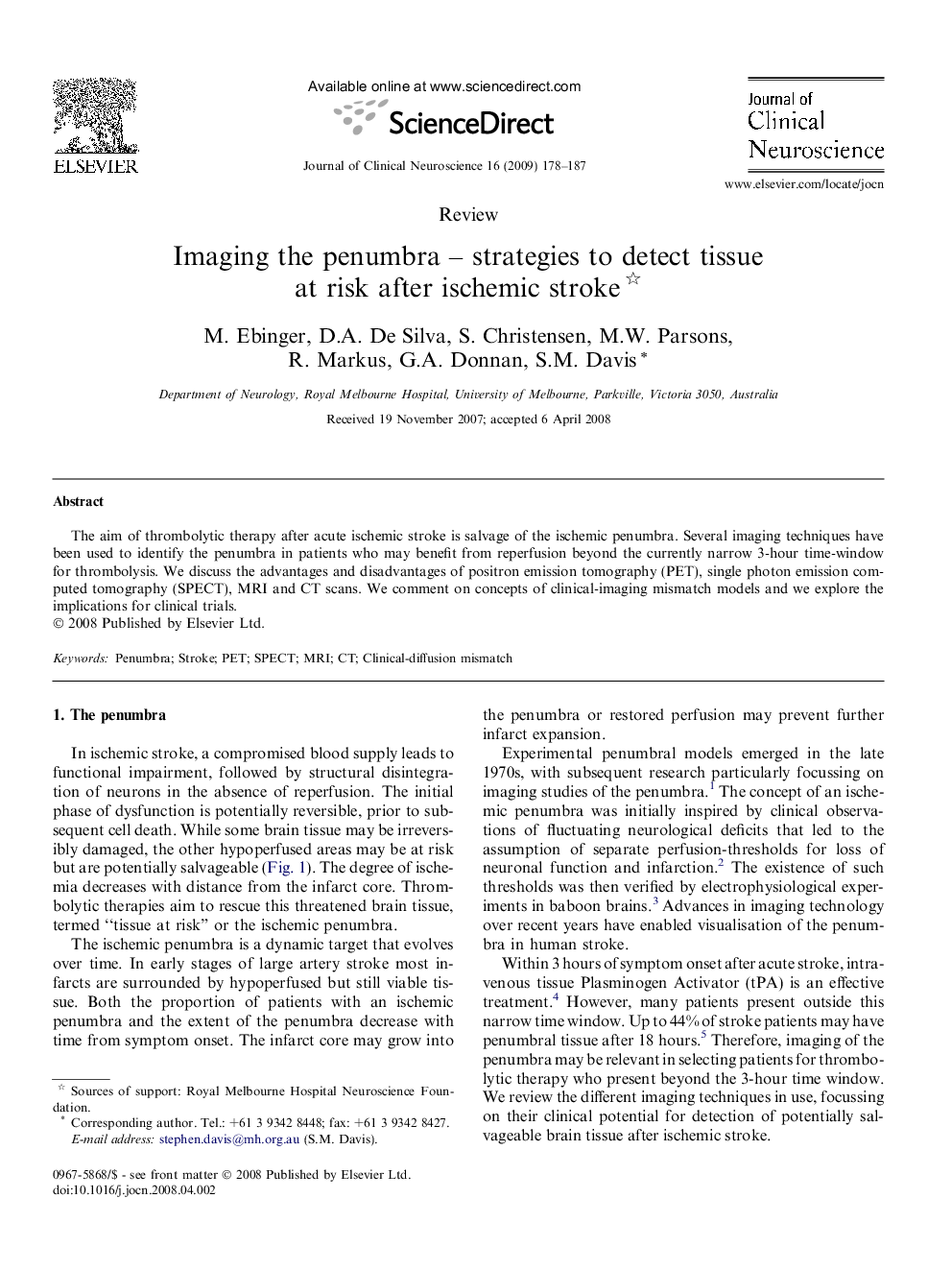| Article ID | Journal | Published Year | Pages | File Type |
|---|---|---|---|---|
| 3061471 | Journal of Clinical Neuroscience | 2009 | 10 Pages |
Abstract
The aim of thrombolytic therapy after acute ischemic stroke is salvage of the ischemic penumbra. Several imaging techniques have been used to identify the penumbra in patients who may benefit from reperfusion beyond the currently narrow 3-hour time-window for thrombolysis. We discuss the advantages and disadvantages of positron emission tomography (PET), single photon emission computed tomography (SPECT), MRI and CT scans. We comment on concepts of clinical-imaging mismatch models and we explore the implications for clinical trials.
Related Topics
Life Sciences
Neuroscience
Neurology
Authors
M. Ebinger, D.A. De Silva, S. Christensen, M.W. Parsons, R. Markus, G.A. Donnan, S.M. Davis,
